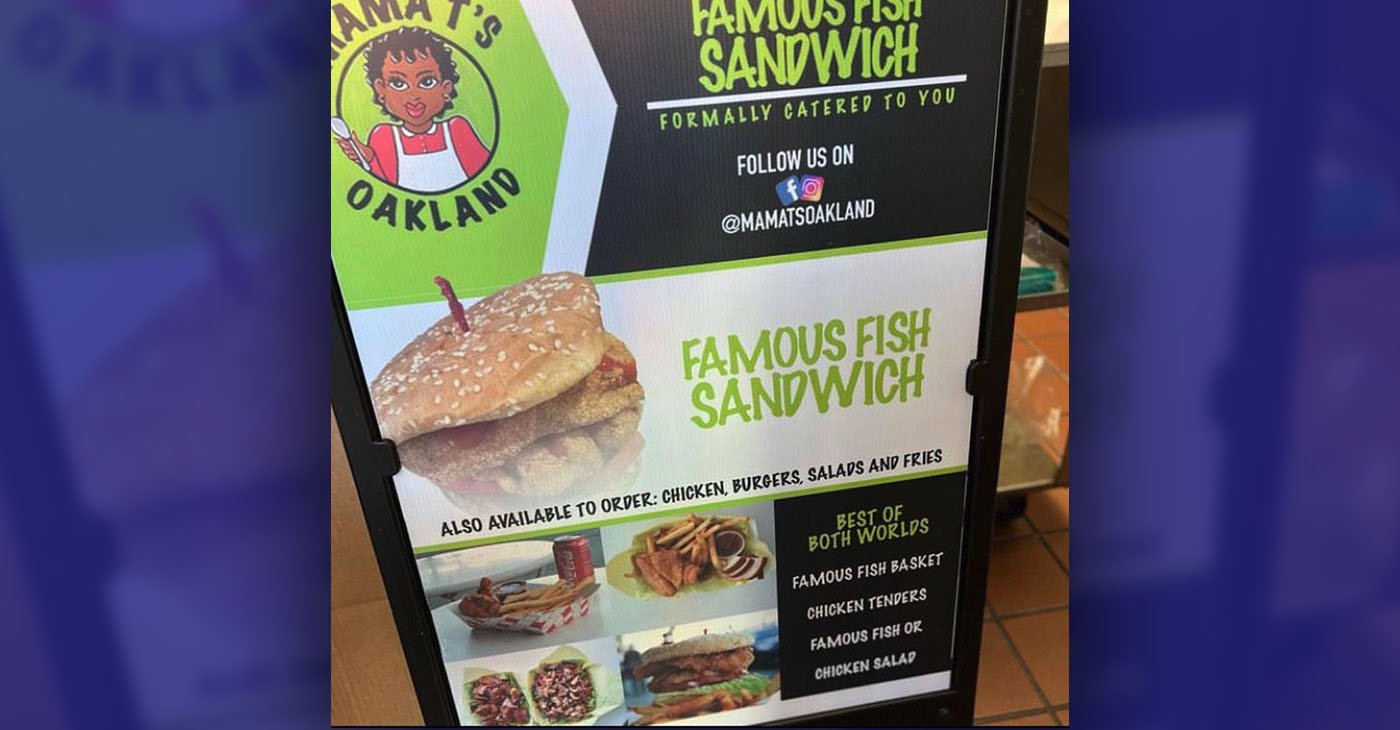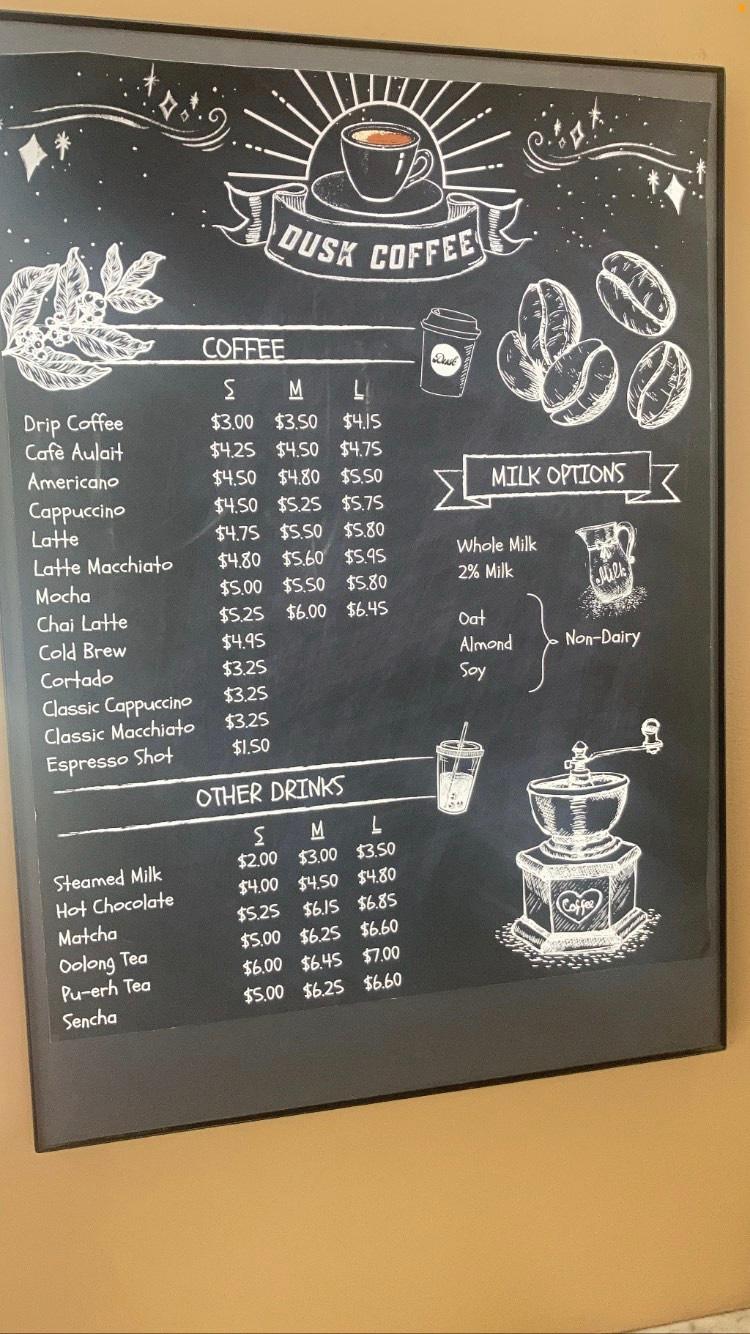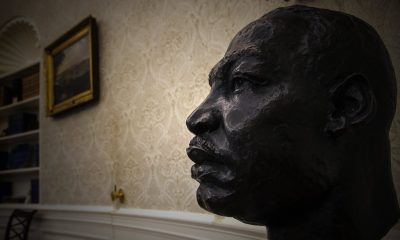Bay Area
Black-Owned Eateries in Downtown Oakland Get a Boost a Special Customer Base: OSA Students
When Oakland School of the Arts students get a break from class, they frequently stop at their favorite hangouts for food and drinks in downtown Oakland, including three Black-owned spots, Dusk Coffee, Mama T’s, and Rare Blend Coffee. Black-owned businesses tend to be hard to find because they are hard to keep around. However students at Oakland School for the Arts (OSA) help keep these businesses around by visiting so frequently.

By Daisha Williams
Post News Group Intern
When Oakland School of the Arts students get a break from class, they frequently stop at their favorite hangouts for food and drinks in downtown Oakland, including three Black-owned spots, Dusk Coffee, Mama T’s, and Rare Blend Coffee.
Black-owned businesses tend to be hard to find because they are hard to keep around. However students at Oakland School for the Arts (OSA) help keep these businesses around by visiting so frequently.
A high schooler’s day is long, with eight hours of school, and for many, extracurricular activities after school. Caffeine is a much-needed energy boost for many students, and coffee is an easy, delicious, way to get it.
Both Dusk Coffee and Rare Blend Coffee get a significant amount of business from OSA students.

A rose latte is one of the appealing drinks that Oakland School for the Arts students buy at Dusk Coffee. Photo by Daisha Williams.
Rare Blend is a small cafe that sits on the corner in between the school and the parking lot on 19th street. There are tables and little booths inside, but students tend to prefer sitting outside in the alleyway in groups of six to eight, with a few at a time going inside to get drinks. In addition to coffee, Rare Blend offers small pastries and smoothies.
Dusk Coffee is a little farther away, on 16th street, but still incredibly easy for students to go to on their lunch break. There are many tables and chairs outside their cafe, so students often eat lunch here as well. The cafe is decorated in neutral colors, contrasting with Rare Blend’s colorful aesthetic. In this sense, Dusk is a very traditional coffee shop. In other ways it is incredibly unique, one example being their inclusion of fun menu items like their rose latte.
OSA’s high school students are able to go off campus for lunch and a popular spot for them is Mama T’s, named after the owner. Unlike many local restaurants, Mama T’s has been around for almost 15 years, so it has a long-standing reputation with OSA students.
While many small businesses shut down during 2020 and 2021 due to COVID-19 restrictions. Mama T’s was one of the few businesses that stayed open.
When asked about the pandemic affecting her restaurant, Mama T said, “It definitely impacted me, not only not having the school, but also the City Hall workers and everyone else. The thing that saved me was that I got a contract to make lunches for homeless people.”
Formerly known as Catered 2 U, after restrictions were lifted the restaurant rebranded to Mama T’s, named after the owner. Located less than a block from OSA’s main entrance, the business has no seating area, just a kitchen and a counter.
Still, kids don’t mind standing as they wait for their food before going elsewhere. When asked about the amount of business they get from OSA students, Mama T replied, “Enough so that I created the OSA menu. There are several other schools in the area but I don’t do it for them because they come once every three or four months… I get students from OSA every single day.”
The OSA menu has specific meals for the students, as well as discounts on normal menu items. One menu item that is extremely popular with the students is their fries, which is featured on the OSA menu for only $3 a serving. Robert O’Grady, a junior at OSA said, “Their fries were legendary…. There’s no word to describe it, their fries were on everybody’s mind.”
Other popular menu items include their chicken nuggets and their “famous” fish sandwich.
William Truong, OSA’s student body president, called Mamma T’s “the place I go to treat myself to something good.”
If you’d like to visit, here are the addresses for all the places mentioned.
Mama T’s: 1711 Telegraph Ave
Rare Blend Cafe: 555 19th St
Dusk Coffee: 1615 Broadway
Activism
Oakland Post: Week of May 21 – 27, 2025
The printed Weekly Edition of the Oakland Post: Week of May 21 – 27, 2025

To enlarge your view of this issue, use the slider, magnifying glass icon or full page icon in the lower right corner of the browser window.
Bay Area
Chevron Richmond Installs Baker Hughes Flare.IQ, Real-time Flare Monitoring, Control and Reduction System
While the sight of flaring can cause concern in the community, flares are essential safety systems that burn pollutants to prevent them from being released directly into the atmosphere. They activate during startup and shut-down of facility units or during upsets or equipment malfunctions. The typical flare stack is about 200 feet high so that vapors are well above street levels.

The Richmond Standard
Chevron Richmond recently installed flare.IQ, a real-time, automated system that will improve the facility’s flaring performance.
The technology, developed by Panametrics, a Baker Hughes business, uses sensors to monitor, reduce and control flaring in real time. It collects and assesses data on refinery processes, such as temperature, pressure, gas flow and gas composition, and adjusts accordingly to ensure flares burn more efficiently and cleanly, leading to fewer emissions.
“The cleaner the flare, the brighter the flame can look,” said Duy Nguyen, a Chevron Richmond flaring specialist. “If you see a brighter flame than usual on a flare, that actually means flare.IQ is operating as intended.”
While the sight of flaring can cause concern in the community, flares are essential safety systems that burn pollutants to prevent them from being released directly into the atmosphere. They activate during startup and shut-down of facility units or during upsets or equipment malfunctions. The typical flare stack is about 200 feet high so that vapors are well above street levels.
“A key element in Baker Hughes’ emissions abatement portfolio, flare.IQ has a proven track record in optimizing flare operations and significantly reducing emissions,” said Colin Hehir, vice president of Panametrics, a Baker Hughes business. “By partnering with Chevron Richmond, one of the first operators in North America to adopt flare.IQ, we are looking forward to enhancing the plant’s flaring operations.”
The installation of flare.IQ is part of a broader and ongoing effort by Chevron Richmond to improve flare performance, particularly in response to increased events after the new, more efficient hydrogen plant was brought online in 2019.
Since then, the company has invested $25 million — and counting — into flare minimization. As part of the effort, a multidisciplinary refinery team was formed to find and implement ways to improve operational reliability and ultimately reduce flaring. Operators and other employees involved in management of flares and flare gas recovery systems undergo new training.
“It is important to me that the community knows we are working hard to lower emissions and improve our flaring performance,” Nguyen said.
Also evolving is the process by which community members are notified of flaring incidents. The Community Warning System (CWS), operated by Contra Costa County is an “all-hazard” public warning system.
Residents can opt-in to receive alerts via text, e-mail and landline. The CWS was recently expanded to enable residents to receive notifications for “Level 1” incidents, which are considered informational as they do not require any community action.
For more information related to these topics, check out the resources included on the Chevron Richmond, CAER and Contra Costa Health websites. Residents are also encouraged to follow @chevronrichmond and @RFDCAOnline on Facebook and X (formerly Twitter), where additional information may be posted during an incident.
Activism
Oakland Hosts Town Hall Addressing Lead Hazards in City Housing
According to the city, there are 22,000 households in need of services for lead issues, most in predominantly low-income or Black and Latino neighborhoods, but only 550 to 600 homes are addressed every year. The city is hoping to use part of the multimillion-dollar settlement to increase the number of households served each year.

By Magaly Muñoz
The City of Oakland’s Housing and Community Development Department hosted a town hall in the Fruitvale to discuss the efforts being undertaken to remove lead primarily found in housing in East and West Oakland.
In 2021, the city was awarded $14 million out of a $24 million legal settlement from a lawsuit against paint distributors for selling lead-based paint that has affected hundreds of families in Oakland and Alameda County. The funding is intended to be used for lead poisoning reduction and prevention services in paint only, not water or other sources as has been found recently in schools across the city.
The settlement can be used for developing or enhancing programs that abate lead-based paint, providing services to individuals, particularly exposed children, educating the public about hazards caused by lead paint, and covering attorney’s fees incurred in pursuing litigation.
According to the city, there are 22,000 households in need of services for lead issues, most in predominantly low-income or Black and Latino neighborhoods, but only 550 to 600 homes are addressed every year. The city is hoping to use part of the multimillion-dollar settlement to increase the number of households served each year.
Most of the homes affected were built prior to 1978, and 12,000 of these homes are considered to be at high risk for lead poisoning.
City councilmember Noel Gallo, who represents a few of the lead-affected Census tracts, said the majority of the poisoned kids and families are coming directly from neighborhoods like the Fruitvale.
“When you look at the [kids being admitted] at the children’s hospital, they’re coming from this community,” Gallo said at the town hall.
In order to eventually rid the highest impacted homes of lead poisoning, the city intends to create programs and activities such as lead-based paint inspections and assessments, full abatement designed to permanently eliminate lead-based paint, or partial abatement for repairs, painting, and specialized cleaning meant for temporary reduction of hazards.
In feedback for what the city could implement in their programming, residents in attendance of the event said they want more accessibility to resources, like blood testing, and information from officials about lead poisoning symptoms, hotlines for assistance, and updates on the reduction of lead in their communities.
Attendees also asked how they’d know where they are on the prioritization list and what would be done to address lead in the water found at several school sites in Oakland last year.
City staff said there will be a follow-up event to gather more community input for programming in August, with finalizations happening in the fall and a pilot launch in early 2026.
-

 #NNPA BlackPress3 weeks ago
#NNPA BlackPress3 weeks agoMLK Bust Quietly Removed from Oval Office Under Trump
-

 Activism4 weeks ago
Activism4 weeks agoOakland Post: Week of April 30 – May 6, 2025
-

 Activism3 weeks ago
Activism3 weeks agoOakland Post: Week of May 7 – 13, 2025
-

 #NNPA BlackPress3 weeks ago
#NNPA BlackPress3 weeks agoTrump Abruptly Fires First Carla Hayden: The First Black Woman to Serve as Librarian of Congress
-

 Activism2 weeks ago
Activism2 weeks agoNew Oakland Moving Forward
-

 Activism2 weeks ago
Activism2 weeks agoAfter Two Decades, Oakland Unified Will Finally Regain Local Control
-

 Activism2 weeks ago
Activism2 weeks agoOakland Post: Week of May 14 – 20, 2025
-

 Alameda County2 weeks ago
Alameda County2 weeks agoOakland Begins Month-Long Closure on Largest Homeless Encampment












































